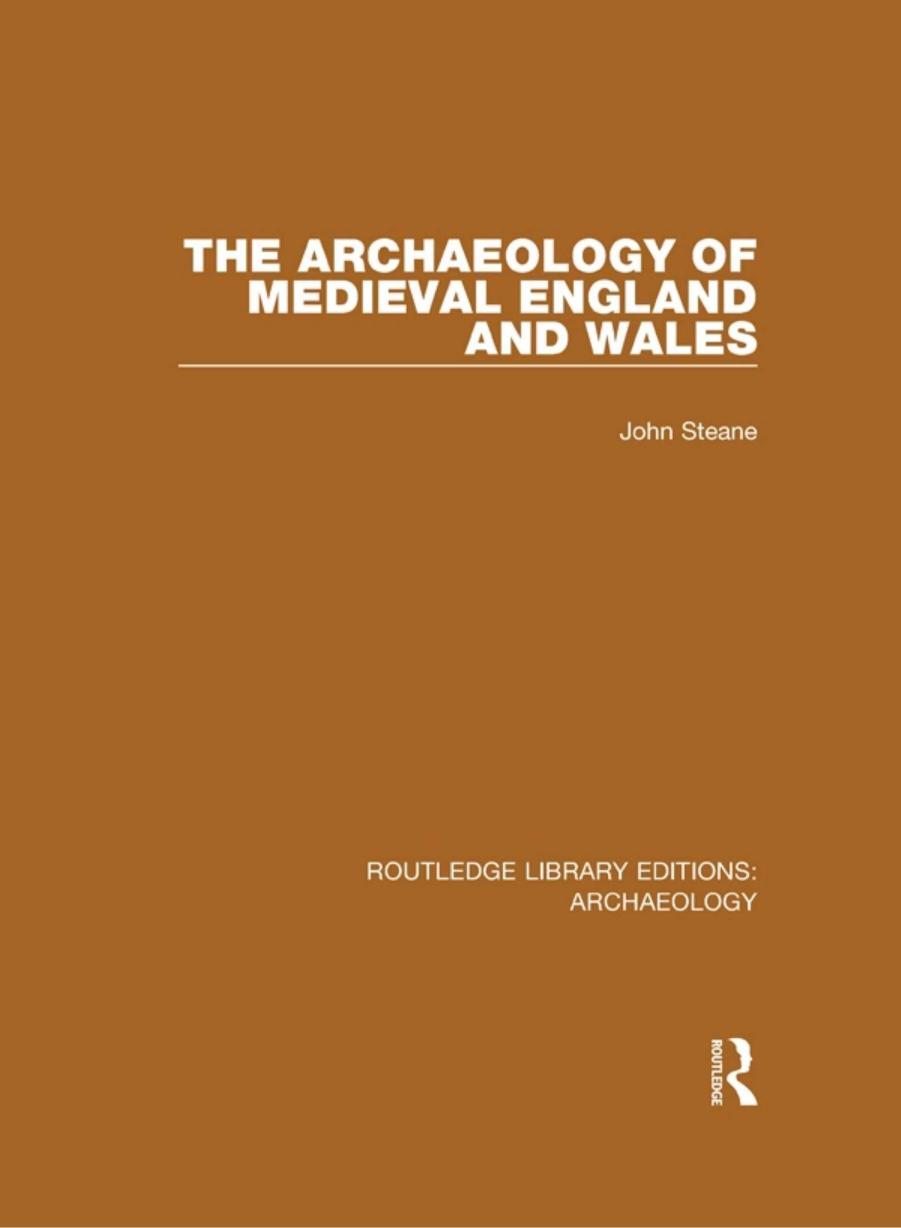The Archaeology of Medieval England and Wales by John Steane

Author:John Steane
Language: eng
Format: epub, pdf
ISBN: 9781317599937
Publisher: Routledge
Figure 5.3: Plan of a Buckinghamshire Medieval Farm at Great Linford, Milton Keynes (after R.J. Zeepvat, 1979)
5. The Origins of the Open-field System
Vigorous controversy surrounds ‘the origins of the open-field system’.29 There are not many people who still believe with Seebohn and the Orwins that the Anglo-Saxons brought their field systems ready made from their continental homelands and imposed them on their conquered English acres. It is increasingly coming to be held that an early form of settlement all over Britain was the hamlet and its associated infield-outfield system.30 A small cluster of farmsteads occupied by kinship groups would have constituted the normal settlement. Nearby, perhaps ringed around by a low turf wall, was a plot of intensivelv cultivated arable; all the manure produced by the animals of the settlement was used on this ‘infield’ which may have been laid out in undivided block fields or perhaps as subdivided strip fields. Surrounding the area were a number of plots which were brought under cultivation for short periods of from two to eight years and followed by periods of fallow from six to 25 years. This was the ‘outfield’. Other pasture land, grasslands, woodlands and heaths were used extensively.
How then did open fields with their characteristic strips develop and ultimately cover much of midland, eastern and southern England? Dr Thirsk has argued that early Saxon communities held their land in severalty but later population pressures and the operation of the principle of partible inheritance resulted in the division of many holdings into strips.31Doubtless some strips resulted from groups of colonisers clearing land and allocating it communally. In the Chilterns, for instance, in the thirteenth century, lords are found dividing freshly cleared lands among their tenants. Again in the Lincolnshire Fens, land, newly reclaimed between 1230 and 1250, was partitioned first among the seven hundreds involved, then among the villages and finally among individual farmers. Other strips were formed when manorial lords gave up farming themselves and parcelled their demesnes among lessees.
Archaeology, being concerned only with the tangible traces of cultivation, the marks made by farmers on fields such as pits, ditches and banks, is unlikely to be able to contribute very much to this discussion of origins. It cannot hope to know what the overall tenurial arrangements were or how the fields were organised by the society which developed them. Great strides, however, have been made recently by using field-archaeological techniques in recognising features of field-systems and in particular in mapping systematically areas of ridge-and-furrow, the principal physical remains of open-field cultivation.
Download
The Archaeology of Medieval England and Wales by John Steane.pdf
This site does not store any files on its server. We only index and link to content provided by other sites. Please contact the content providers to delete copyright contents if any and email us, we'll remove relevant links or contents immediately.
| Africa | Americas |
| Arctic & Antarctica | Asia |
| Australia & Oceania | Europe |
| Middle East | Russia |
| United States | World |
| Ancient Civilizations | Military |
| Historical Study & Educational Resources |
Room 212 by Kate Stewart(5037)
The Crown by Robert Lacey(4723)
Endurance: Shackleton's Incredible Voyage by Alfred Lansing(4676)
The Iron Duke by The Iron Duke(4292)
The Rape of Nanking by Iris Chang(4138)
Joan of Arc by Mary Gordon(4014)
Killing England by Bill O'Reilly(3951)
Say Nothing by Patrick Radden Keefe(3903)
I'll Give You the Sun by Jandy Nelson(3358)
Shadow of Night by Deborah Harkness(3303)
Hitler's Monsters by Eric Kurlander(3268)
Mary, Queen of Scots, and the Murder of Lord Darnley by Alison Weir(3149)
Blood and Sand by Alex Von Tunzelmann(3138)
Darkest Hour by Anthony McCarten(3071)
Eleanor & Park by Rainbow Rowell(3063)
Margaret Thatcher: The Autobiography by Thatcher Margaret(3029)
Red Famine: Stalin's War on Ukraine by Anne Applebaum(2873)
Book of Life by Deborah Harkness(2867)
The One Memory of Flora Banks by Emily Barr(2803)
